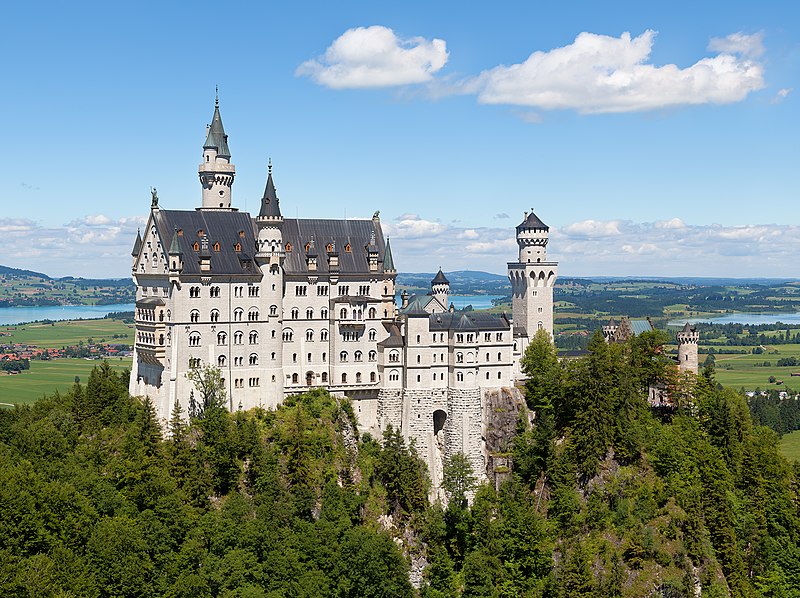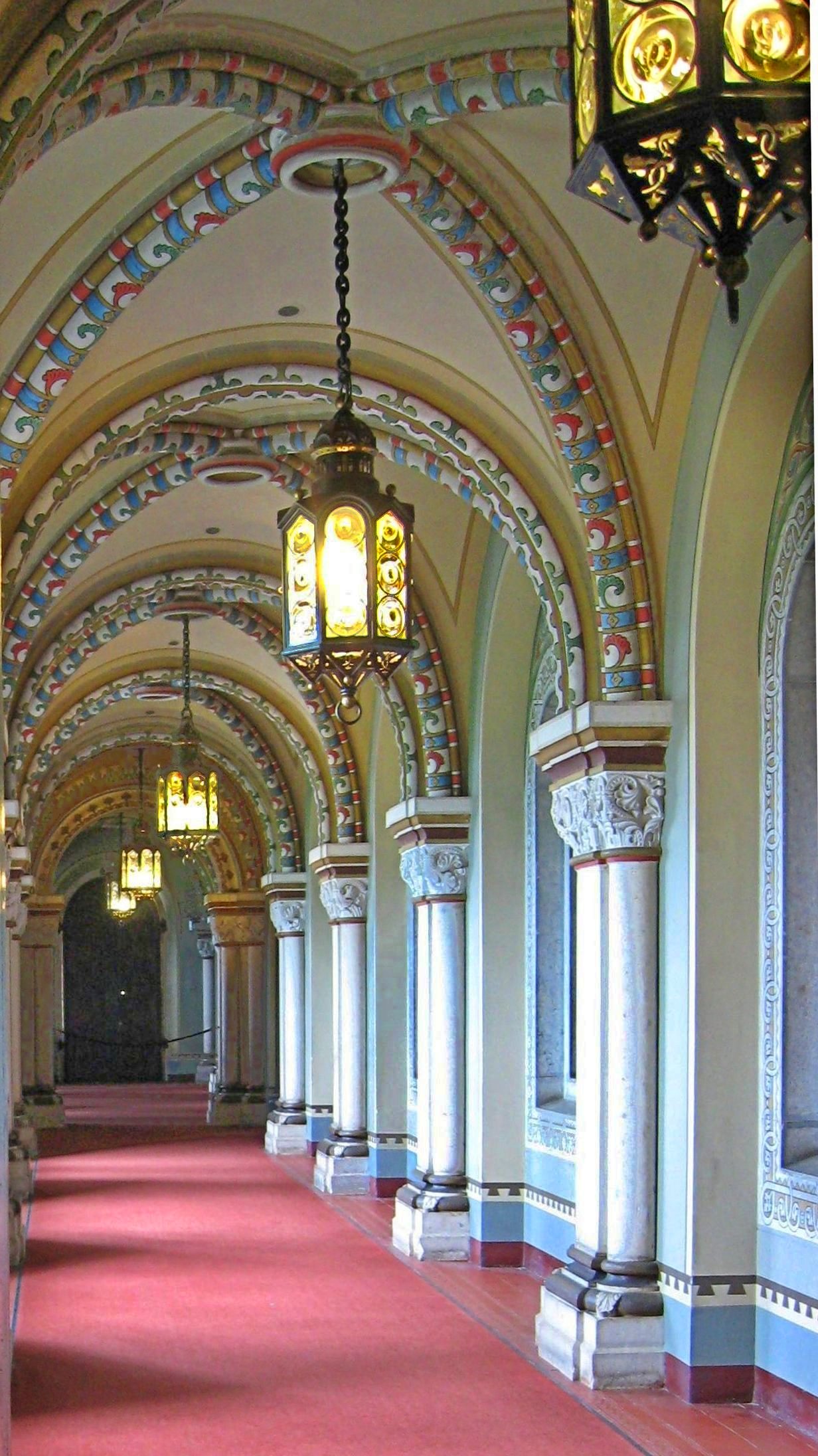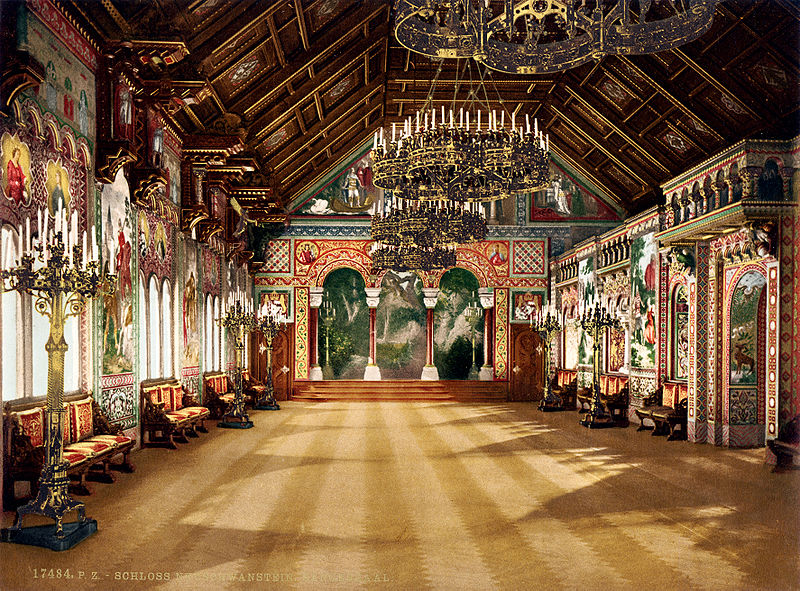
Neuschwanstein Castle is a 19th-century Romanesque Revival palace on a rugged hill above the village of Hohenschwangau near Füssen in southwest Bavaria, Germany. The palace was commissioned by King Ludwig II of Bavaria as a retreat and in honour of Richard Wagner. Ludwig paid for the palace out of his personal fortune and by means of extensive borrowing, rather than Bavarian public funds.
The castle was intended as a home for the King, until he died in 1886. It was open to the public shortly after his death. Since then more than 61 million people have visited Neuschwanstein Castle. More than 1.3 million people visit annually, with as many as 6,000 per day in the summer.

The effect of the Neuschwanstein ensemble is highly stylistic, both externally and internally. The king’s influence is apparent throughout, and he took a keen personal interest in the design and decoration. An example can be seen in his comments, or commands, regarding a mural depicting Lohengrin in the Palas; “His Majesty wishes that … the ship be placed further from the shore, that Lohengrin’s neck be less tilted, that the chain from the ship to the swan be of gold and not of roses, and finally that the style of the castle shall be kept medieval.”
The suite of rooms within the Palas contains the Throne Room, King Ludwig’s suite, the Singers’ Hall, and the Grotto. The interior and especially the throne room Byzantine-Arab construction resumes to the chapels and churches of the royal Sicilian Norman-Swabian period in Palermo related to the Kings of Germany House of Hohenstaufen. Throughout, the design pays homage to the German legends of Lohengrin, the Swan Knight. Hohenschwangau, where King Ludwig spent much of his youth, had decorations of these sagas. These themes were taken up in the operas of Richard Wagner. Many rooms bear a border depicting the various operas written by Wagner, including a theatre permanently featuring the set of one such play. Many of the interior rooms remain undecorated, with only 14 rooms finished before Ludwig’s death. With the palace under construction at the King’s death, one of the major features of the palace remained unbuilt. A massive keep, which would have formed the highest point and central focus of the ensemble, was planned for the middle of the upper courtyard but was never built, at the decision of the King’s family. The foundation for the keep is visible in the upper courtyard.







Reblogged this on The MarkoZen Blog.
LikeLike